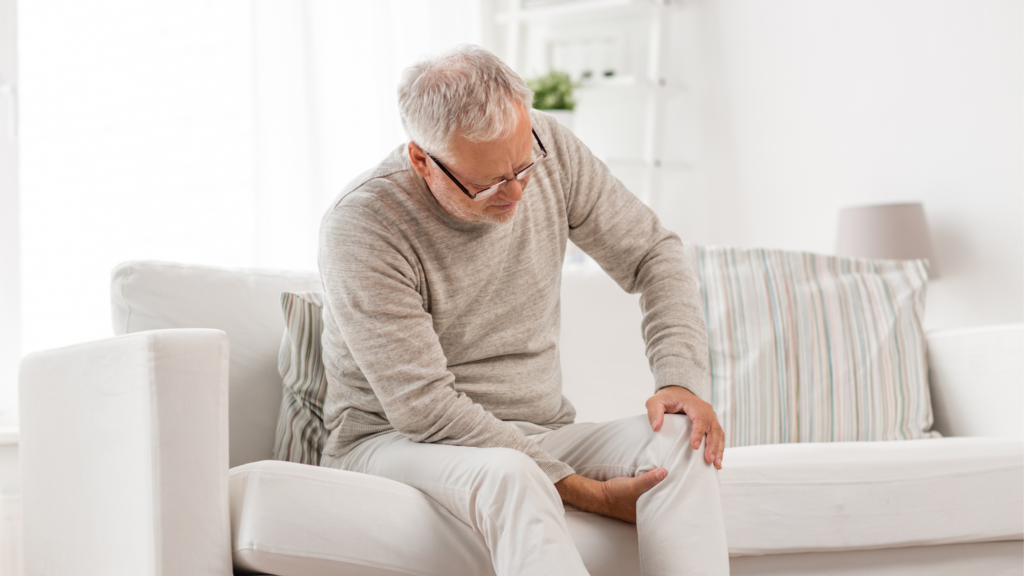As the temperatures drop and winter blankets the world in frosty landscapes, many individuals find themselves grappling with an all-too-familiar discomfort—joint pain. The sensation of joints aching more intensely during colder months is a widespread phenomenon experienced by people of various ages and backgrounds. While it might seem like an old wives’ tale, there’s scientific reasoning behind this seasonal discomfort.
Do achy joints plague you during the coldest months? Does it seem like your knees, hips, and ankles feel sore whenever snow is falling?
It’s not your imagination! Winter weather—particularly cold—can cause slow, achy joints, making it hard to get moving. If you’re looking for winter joint pain relief, here are eight tips to help you avoid the discomfort brought
Changes in Barometric Pressure:
One of the leading theories behind increased joint pain during winter revolves around changes in barometric pressure. Barometric pressure refers to the pressure exerted by the atmosphere and its fluctuations. During the colder months, barometric pressure tends to drop. As it does, it’s believed to cause expansion and contraction in the tendons, muscles, and tissues surrounding the joints. For individuals with sensitive joints or pre-existing conditions like arthritis, these fluctuations can exacerbate pain.
Cold Temperatures and Joint Fluid:
The viscosity of synovial fluid, which lubricates joints and reduces friction, can be affected by colder temperatures. When it’s cold, this fluid thickens, reducing its effectiveness in cushioning the joints and making movement more uncomfortable. Consequently, individuals might experience stiffness and pain, particularly in weight-bearing joints such as knees and hips.
Reduced Physical Activity:
During winter, people tend to be less physically active. Cold weather often discourages outdoor activities and exercises, leading to decreased joint flexibility and muscle strength. The lack of movement can contribute to stiffness and discomfort in the joints, intensifying the perception of pain.
Behavioral Changes:
Moreover, seasonal changes might also impact people’s lifestyles and habits. Changes in diet, increased consumption of comfort foods, and altered sleep patterns during winter can affect inflammation levels in the body. Certain foods high in sugars and processed ingredients can trigger inflammatory responses, potentially aggravating joint pain.
Psychological Impact:
Interestingly, psychological factors might also play a role. Seasonal Affective Disorder (SAD), a form of depression associated with seasonal changes, could amplify pain perception. Individuals experiencing SAD might have a lower pain threshold, making them more susceptible to perceiving joint pain during winter as more intense.
Managing Winter Joint Pain:
While the causes of increased joint pain in winter are multifaceted, there are strategies to alleviate the discomfort:
Stay Active
It is important to stay active and exercise your joints and muscles to reduce pain and stiffness during winters. Exercise increases blood circulation, boosts production of your body’s synovial fluid, which lubricates your joints and makes movement easy and comfortable.
Add Anti-Inflammatory Components to your Daily Diet
It is important to include anti-inflammatory foods in your daily diet, to reduce inflammation, pain and stiffness in the joints and muscles. You can include superfoods such as Ginger, Turmeric, Chilly Peppers, Mint and Virgin Olive Oil. Choose colourful foods like blueberries, blackberries, cherries, spinach, kale and broccoli. Opt for Salmon, Tuna, Sardines, nuts and seeds. Avoid processed foods, excess sugar and salt; high intake of alcohol.
Hydrate Well
We tend to drink less water during winter, leading to dehydration and even the slightest of dehydration can cause increased sensitivity to pain. Drink at least 2-2.5 litres of water daily. You can have lukewarm water if not comfortable with water at room temperature.
Treat Yourself to a Massage
Massaging the legs increases the blood and lymphatic circulation, relaxes and normalises the soft tissues (muscle, connective tissue, tendons, ligaments), which releases nerves and deeper connective tissues; hence reducing spasm in the muscles and overall pain sensation. There are many essential oils that you can use to massage gently on your muscles as they have anti-inflammatory and analgesic properties, like lavender oil, eucalyptus oil, peppermint oil, rosemary oil. Other commonly used oils for massage include – coconut oil, sesame oil, mustard oil, almond oil and olive oil.
Dry Needling
Type of therapy that uses small needles to stimulate nerve endings — or trigger points — in your muscles. Other names for this therapy are intramuscular manual therapy or trigger point dry needling.
The goal of this therapy is to loosen the tight bands of muscle that create trigger points or knots, improve your flexibility and performance, and relieve pain or tightness.
Understanding these influences and adopting proactive measures can significantly alleviate discomfort and help individuals better manage joint pain during the colder months.
DON KELLY TREATMENT PLAN


